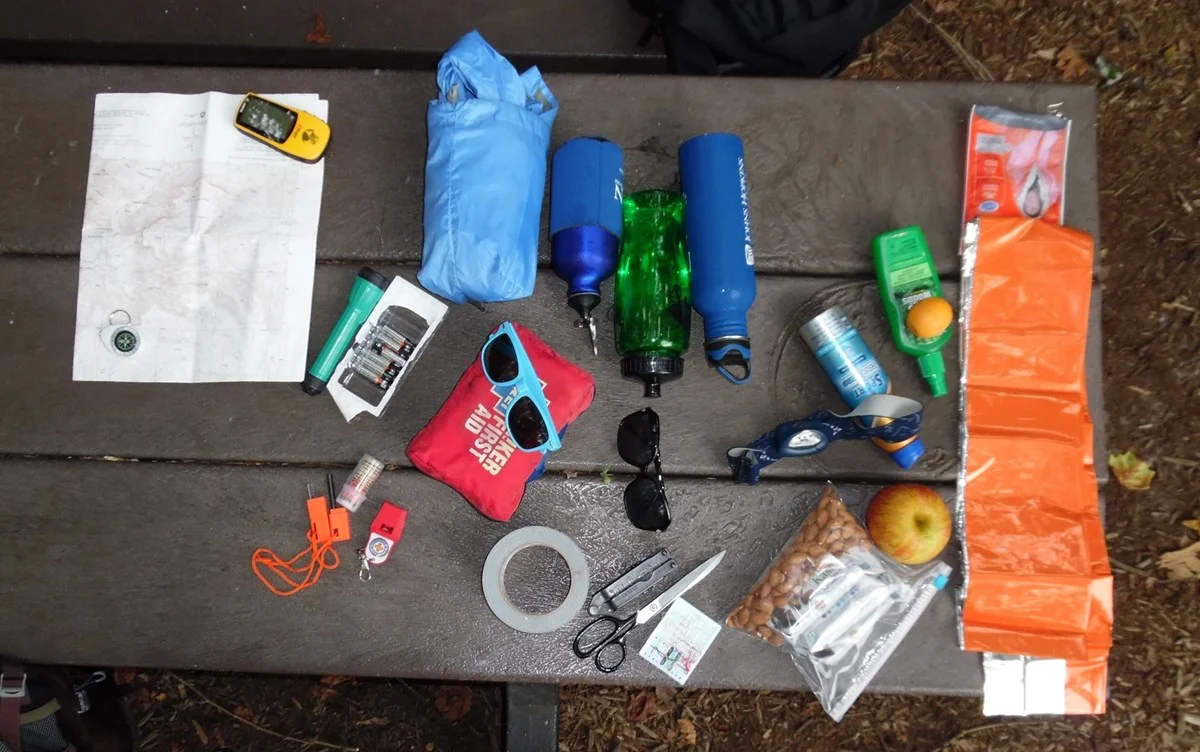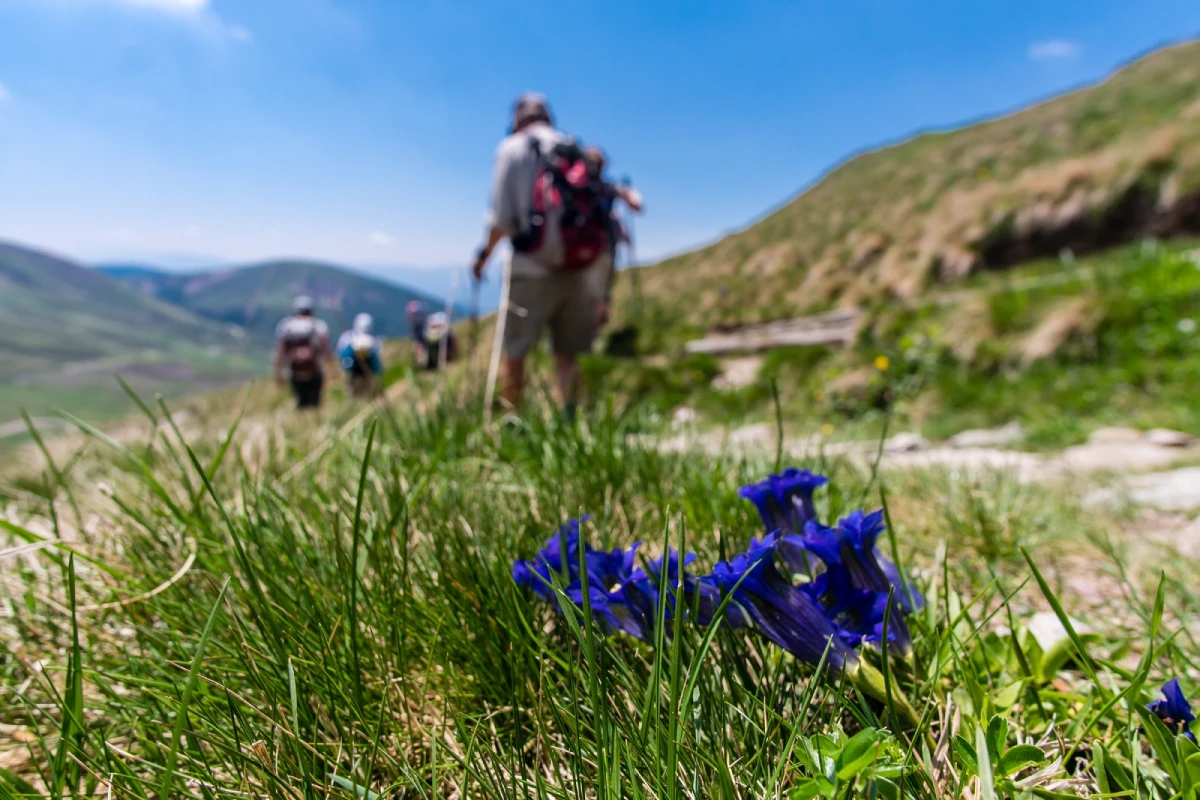Dangers Exist On Every Trail
Newbies to hiking often misunderstand the dangers of visiting the backcountry until it’s too late. Yet understanding the 10 essentials isn’t a difficult topic. As long as you ensure you’re prepared for all types of weather and situations. Take into account the duration, weather, difficulty, and distance of the hike when choosing the gear for your day hike.
By knowing what to pack, you can ensure you’re safe and comfortable in the event you need to survive throughout the night. Did you know that most search and rescue groups can’t rescue people after dark? This is because it’s too risky for their safety due to not being able to use air support. So always take the following ten essentials, it may make or break your adventure. Another piece of advice is to remember to test each piece of your gear before heading outdoors.
It’s important to understand that the list in this article isn’t exhaustive, it’s a starting point. As hikers become more experienced they often add to their packs according to the season and each route. With this in mind, I offer some additional gear options at the end of this guide.
If you want to check out a specific section, navigate via the table of contents. Or read the full ten essentials list to ensure your safety no matter how long or out of the way you travel.
Planning: Before The Hike
Before stepping foot on the trail, you need to complete some tasks. First, inform a reliable person where you are going and when you expect to be home. This is critical for situations where things go awry, they can call the authorities. I leave this person with a detailed printed trip itinerary too. Especially if I’m attempting multi-day, long distances or undertaking ambitious routes.
Next, learn your route and plan how long it will take based on your fitness level. Don’t attempt a solo black diamond route if you have never hiked before, this is a recipe for disaster. Instead, find a route that is easy to moderate and one with serviced rest stops.
Experienced Hikers
As a reminder for intermediate explorers, these are two instances to always plan for.
- Are there any emergency exit points and if not where will you sleep in an emergency?
- Where can you re-up low supplies? Such as water sources such as streams. Always find 2 sources because “dry spells” can occur in the wilderness.
Use a map to plot these points and take it with you on every hike, regardless of the d
What Should You Not Take Hiking
Don’t take valuable items, no one needs jewelry or expensive clothing. Also, limit the amount of clothing while packing. Don’t bring multiple pairs of shoes and non-essential jackets. It’s best not to wear clothing made of cotton or denim. Both of these materials are bad because if they get wet they’ll become heavy and can’t dry quickly.
The 10 Essentials
These are the 10 essential pieces of gear every smart hiker packs for any adventure outdoors. No matter the duration or difficulty always have these items with you when you head out in the backcountry.
1. Flashlight or Headlamp
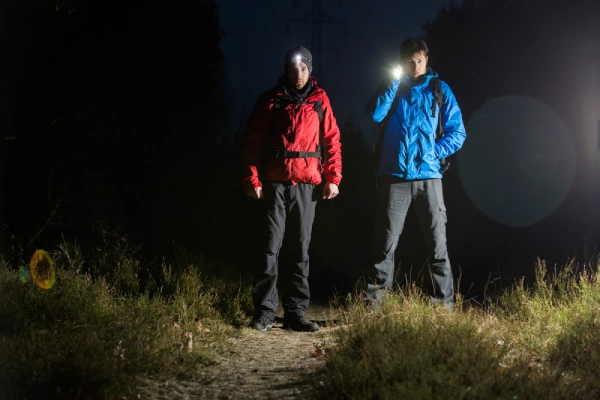
You need illumination in case you get caught out in the dark. It’s scary how easy it is to underestimate the remaining amount of daylight, especially in forests. Often, people who need rescue don’t start lost but simply run out of daylight. Lack of daylight is the single biggest reason for emergency rescues.
So take a high-quality flashlight with an extra bulb and battery per person. Another option if you find holding a flashlight cumbersome is a headlamp. Headlamps are great because they are lightweight, and hands-free with long battery life.
2. Fire-Making Kit
Making fire can be crucial for staying warm outdoors. Especially during soggy weather, an injury, or an unplanned overnight event. Other than heat, fire is a necessity for drying clothes, cooking, or even signaling. A kit could be waterproof matches/lighters or an actual purchased fire starter kit.
I usually bring a fire starter, an easy one is a lint ball from a clothes dryer, stored in a zip-lock bag. In this package. Add a small candle for extra handy illumination.
3. Extra Food and Water
This is important no matter the distance of your hike. Extra food and water can be the difference between an extended stay and a survival situation. So bring enough food and water to sustain for the day, plus some extra calories for the unexpected. A snack with more sugar, for example, a chocolate bar is a good source of quick energy.
Comparing the two, water is more important than food. This is because you can survive 3 weeks without food, but only 3 days without water. In general, for water, many rescue organizations recommend 1 liter per person.
While this is fine for a short hike, I always take 2 liters per person for a hike over 4 hours in length. Also, a good idea is to bring sports drinks to replace electrolytes lost from sweating. If you hike near streams, pack a water filter or chemical treatment to get clean refills for your bottle.
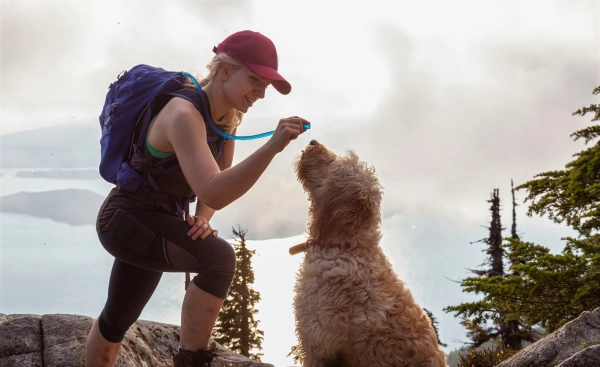
Tip: Use a hydration bladder with a drink hose instead of water bottles. The drink hose sits right by your face, allowing you to sip on water throughout a hike. Ease of use plays a big part in hydration since digging for a water bottle out of a backpack is a nuisance.
4. Extra Clothing
Unexpected or quickly changing weather is the big reason for extra clothing. Your strategy for clothing is all about layering and good breathability. When this strategy is successful it prevents overheating or sweating which causes dehydration. If not corrected you can get hypothermia in cold weather and heat exhaustion in hot weather. The one thing to always remember is that the most appropriate hiking clothing is non-cotton.
Look for lightweight sweat-wicking fabrics that lay close to the skin. Wool, fleece and Gore-Tex are great materials for hiking tops, jackets and pants. Likewise, rain jackets with zippered vents in the armpits and pants with vented leg areas are great. Having vents allows excess body heat to escape in times of heavy exercise in severe weather.
If you have poor circulation it’s also a good idea to bring Gore-Tex or wool gloves. Pack ones that allow you to perform tasks such as holding objects when traveling steep terrain.
One last bonus gear item I take is plastic shopping bags for walking through flooded trails. Place them over the socks inside your boots to add a layer of waterproofing. Doing so will help lower the risk of ruining a fun day hike.
5. First Aid Kit
Self-reliance is critical in the outdoors as many hikes are in areas without cell service. In fact, it’s ideal for everyone to take a wilderness first aid course before heading outdoors.
Next, bring a well-stocked small first aid kit whenever you venture outdoors. For the first aid kit, build your own or buy an excellent ready-made kit from a rescue organization. Good kits should contain items such as gauze, pads, bandages, disinfectants, a splint, and so on. I also customize my kit with over-the-counter painkillers, tweezers and gear repair tape. Having these items can make all the difference in a survival event.
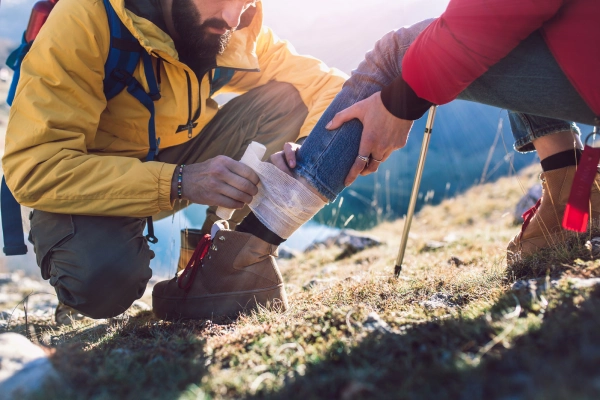
6. Emergency Shelter
By this I mean a portable bivy sack, which is a large orange tarp or blanket. It could even be a large orange plastic bag like a garbage bag. Not only can crawling into the sack/bag help keep you warm and dry in an emergency. But also the bright orange color is visible to search and rescue. If you use a tarp, it can be very useful in creating a makeshift home for the night. Having a shelter or a bivy sack may be the difference between getting hypothermia or not.
7. Signaling Device
Two good signaling devices to pack are a pocket mirror and a whistle. You use the mirror to create reflections of light to signal search and rescue aircraft. These reflections are visible up to 5 miles (8.05 km) in distance. While a whistle will increase the chance of rescuers hearing you when lost. Especially after your voice becomes too hoarse from sustained shouting for help.
In general, if you are sending a distress signal you should do the following. Whistle out three short blasts in timed intervals of 1 to 5 minutes. Do them in several directions from where you are standing, so rescuers above, below or to the sides of you can hear you. This is especially important if you get lost in canyons. If you hear rescuers approaching, continue very short blasts every minute. Don’t stop until they make voice contact and then follow their instructions.
8. Navigation/Communication
At minimum always carry a paper topographic map and a compass. Look online for available topographic maps for local recreation trails. For example, national parks and forests or state parks. For paper maps, I bring a waterproof case to protect the map in case rain is in the forecast.
You could also carry a Global Positioning System (GPS) navigation system. Like a cell/satellite phone or handheld radio. On your mobile phone, you can download apps such as “AllTrails” to locate nearby trails.
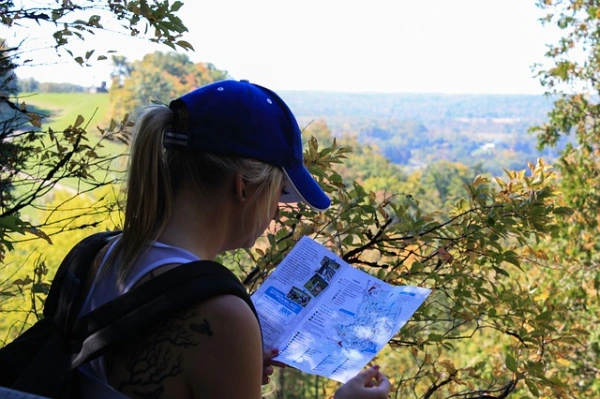
Understanding your location and being able to communicate your location is vital. Yet, knowing orienteering with a compass and a map is more important than relying on technology. Consider a GPS as a good supplement beacon to the map and compass. But don’t trust only GPS devices, as batteries can die or gadgets can break. Particularly if you are trekking in terrain with natural obstacles such as canyons.
9. Pocket Knife or Multi-Tool
Having a pocket knife can be useful in many situations such as helping with shelter building or firewood collecting. But even better is a multi-tool that contains knives, screwdrivers and scissors. It’s useful because it can handle many tasks and pack small. Interesting uses include opening cans or removing thorns from fingers with tweezers. For day hiking my friends and I use models with the knife-scissors-tweezers combinations.
10. Sun Protection
The last of the 10 essentials on this checklist is sun protection. It’s critically important to learn that heatstroke is very dangerous for anyone outside. Sun exposure can lead to burns, dehydration and hypothermia. In snowfields, the sun creates a bright environment that can lead to snow blindness.
Conditions like these are painful and dangerous. Thus, you must stay protected from the sun at all times. So, bring a hat that can shade your face and neck, as well as sunscreen, and sunglasses. Finally, a great idea is to look for clothes with fabrics that contain ultraviolet protection factor (UPF).
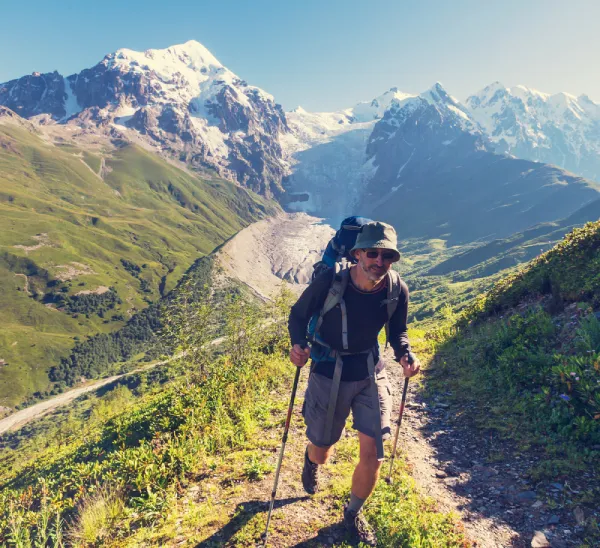
Beyond The 10 Essentials
But wait, what about footwear choices and a backpack? I don’t include these items in the 10 essentials, because everyone knows to wear proper shoes and carry a pack. At the same time though, both play an important role in trail hiking. Therefore, let’s discuss a couple of tips about footwear and the backpack.
Any type of walking on trails will involve significant use of your feet, so you need to take care of them. Your footwear selection will depend on the type of activity and the type of terrain. Often you are walking on uneven ground, climbing small boulders, and trekking through water. The ideal choice is hiking boots, not running shoes as they lack grip to prevent slips and sprained ankles.
Hiking Boots
To choose a hiking boot, look for a pair with good ankle support and superior waterproofing. Try them on and pay special attention to how your feet fit in the boot. If your foot moves around a lot, rubbing against the sides, then expect some blisters while out on the trail. To help to minimize pain on your adventure, break in your boots before you go hiking.
I like to add a pair of quality hiking socks too as they wick sweat away, reduce chafing, and maintain foot warmth. Plus soft socks help further reduce the risk of blisters or skin issues.
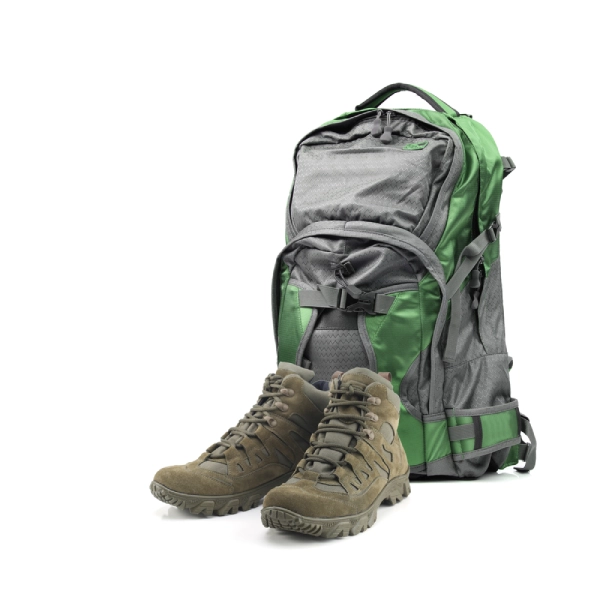
Backpack
Next, if you don’t already have a day pack for hiking you’ll want one that is comfortable and of useful size. Try to avoid getting one that is too large though, as people often overpack with unnecessary items. Another feature to look for is a backpack rain cover; some packs come with one built-in. Without an actual rain cover, you could supplement with large zip-lock bags to store your essentials inside.
What To Bring Hiking: Optional Gear
Being experienced, I tend to mix and match extra items depending on the time of year I trek out into the wilderness. What to bring day hiking may also include additional hiking gear such as the following:
- Cell phone – Keep it turned off until you need it, to save battery life. Also, consider an outdoor case to protect it from the elements.
- Bug repellent – Especially when hiking in Spring.
- Local guidebook – Good added reference in case you need an emergency exit during a hike.
- Duct Tape – The single most versatile tool on earth. Use it to patch bags, clothing and more.
- Toilet paper – You never know when “nature calls” and it’s better than a leaf.
- Ziploc bag – Used to pack over items for waterproofing or to carry out waste.
- Hand Sanitizer – For after nature calls and before eating meals.
- Chapstick – Great when trekking in windy unprotected areas.
- Binoculars – Take advantage of the great views for wildlife watching.
- Camera – Document your fun. Remember to bring an extra battery.
- Thermos – Hot drinks for cold weather.
- Waterproof Pencil and pad – Helpful in emergencies.
- Trekking Poles – Great for people with weak joints or anyone who wants extra stability.
- Bear Spray or Noise-makers – Crucial for deep wilderness hikes.
Items For After A Hike
At the end of the hike, both men and women are often sweaty and tired. For these reasons, prepare to keep a few things in the car to help make the ride home comfortable.
Don’t Forget A Backup/Clean Change of Clothes
Either keep these in your car or store them in a waterproof bag at the bottom of your pack. Changing into a new shirt and a pair of pants is simple and glorious at the end of the day. Make sure to include extra footwear, so you can change out of dirty and wet boots.
Spare Water/Food
Keep some extra water and snacks in the car or try carrying some in your pack. Having these will help to get your hydration back to normal levels and replenish energy.
Clean Towel
I like to have one stored in my car to dry off and warm up after an adventure on the trails. Some people like to carry a towel while they hike, either way, it’s your choice.
Finishing up: The 10 Essentials
Knowing what to bring day hiking will ensure you’re properly stocked for your journey. Over time as you become more experienced, you can mix and match your pack to suit the conditions. Regardless of distance always remember to consult weather reports before you set out. Most of all keep your trips manageable and remember to tell someone where and when you are hiking. Be safe and have a fun trip outdoors!
